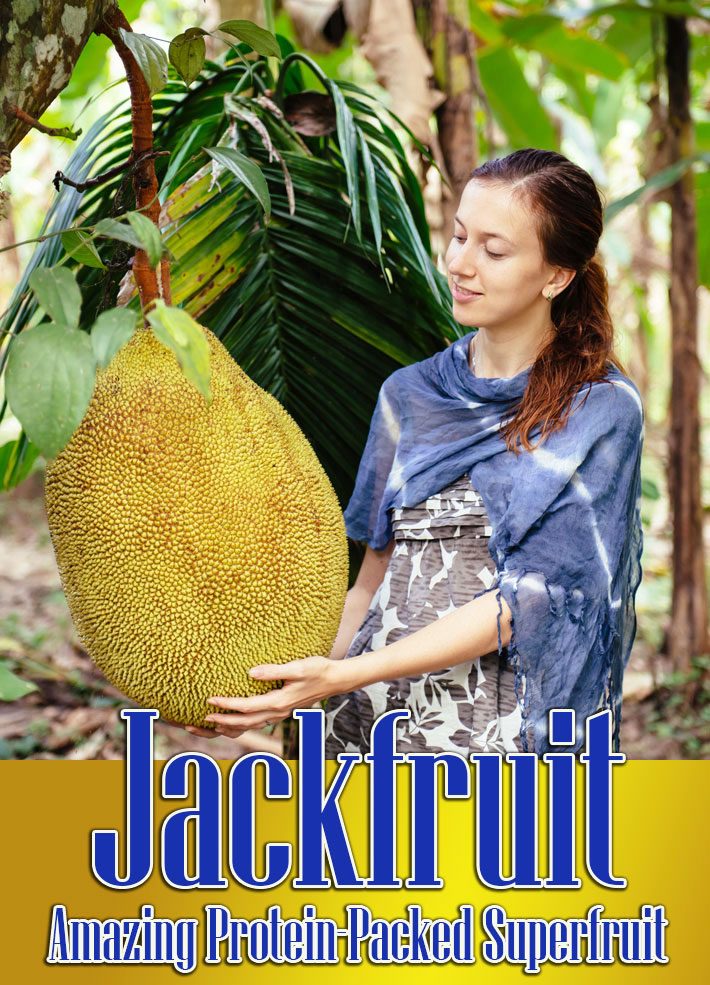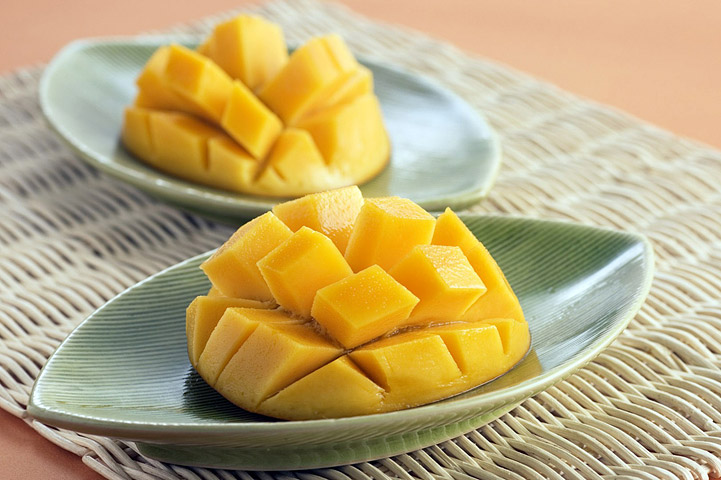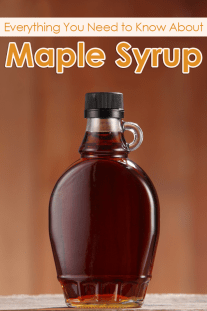
When you hear the phrase “vegan protein,” you probably think of soy, nuts, beans, quinoa—the usual suspects. But jackfruit may soon be making its way to a plant-based, protein-packed plate near you.
If you couldn’t pick a jackfruit out of a lineup, you’re definitely not alone. “Jackfruit is the most amazing fruit that most people have never heard of,” is how Eric Helms, founder of New York City’s cult smoothie spot Juice Generation (and superfood connoisseur) describes the buzzy ingredient.
The giant (up to 80 pounds!), tree-born tropical fruit grown in South and Southeast Asia has become a health-conscious favorite because, according to Helms, it’s “high in protein, potassium and vitamin B and lower in calories than most meat-free alternatives like corn and soy.” He’s incorporated jackfruit into several dishes on Juice Generation’s new Vegan4Lunch menu (an initiative that encourages customers to eat one locally sourced, plant-based meal a day).

He’s not alone in the love; Scott Winegard, director of culinary operations for Matthew Kenney’s raw food empire, is also a huge fan, while Minimalist Baker features a jackfruit recipe in her upcoming cookbook, Minimalist Baker’s Everyday Cooking.
Health benefits of jackfruit
- 100 g of edible jackfruit bulbs provide 95 calories. The fruit is made of soft, easily digestible flesh (bulbs) made up of simple sugars like fructose and sucrose that when eaten replenishes energy and revitalizes the body instantly.
- Jackfruit is rich in dietary fiber, which makes it a good bulk laxative. The fiber content helps protect the colon mucous membrane by binding to and eliminating cancer-causing chemicals from the colon.
- Fresh fruit has small but significant amounts of vitamin-A, and flavonoid pigments such as carotene-ß, xanthin, lutein and cryptoxanthin-ß. Together, these compounds play vital roles in antioxidant and vision functions. Vitamin A is also required for maintaining integrity of mucusa and skin. Consumption of natural fruits rich in vitamin-A, and carotenes has been found to protect from lung and oral cavity cancers.
- Jackfruit is a good source of antioxidant vitamin-C, provides about 13.7 mg or 23% of RDA. Consumption of foods rich in vitamin C helps the body develop resistance against infectious agents and scavenge harmful free radicals.
- It is one of the rare fruits that is rich in B-complex group of vitamins. It contains very good amounts of vitamin B-6 (pyridoxine), niacin, riboflavin, and folic acid.
- Further, fresh fruit is a good source of potassium, magnesium, manganese, and iron. Potassium is an important component of cell and body fluids that helps controlling heart rate and blood pressure.

Where to buy Jackfruit?
So where has this magical fruit been hiding all our lives? You can sometimes find it whole at Asian markets and natural food stores, which also carry it canned in brine. An increasing number of indie food upstarts are also starting to package and sell it, like Upton’s Naturals—which offers fun flavors like Chili Lime Carnitas and Thai Curry—and The Jackfruit Company (both brands can be found at Whole Foods).
When jackfruit is fresh from the pod, it tastes like a tropical Starburst; you’ll know it’s ripe when it emits a fruity smell and starts to give when you squeeze it. When it’s underripe, it isn’t sweet and it has a meatier texture, which makes it perfect for cooking—from pan-frying to baking to slow-cooking and beyond. “It’s highly versatile, as it takes on the flavor of whatever it’s cooked in,” said Helms. “For example, mixing jackfruit with a barbecue sauce allows it to take on a pulled pork flavor profile.”
Preparation and serving method
The fruit is cut in a similar fashion like other large size fruits like watermelon. White, gummy latex oozes from the cut ends even in ripe fruit but to a lesser extent than in green unripe one. This latex problem can be overcome by applying little coconut oil on the hands while separating bulbs since protective gloves would not help.
Another great way of dealing with latex problem is mopping or rubbing the cut sections with lemon slice or gently drowning in a bowl of acidulated water. The thick rind that runs through the middle of the fruit is then removed, and the whole section is gently twisted few times in order to loosen individual bulbs.
Each edible bulb is made of thick orange-yellow flesh; cut open it with small knife or split the bulb with fingertips vertically. Inside each bulb, you find a thick light brown color seed; keep it aside and enjoy the delicious flesh (sheath).

Here are some serving tips:
- Jackfruit bulbs have unique flavor and sweet taste. Enjoy them without any additions in order to experience their rich taste.
- Jackfruit slices hand-mixed with grated coconut, honey, banana slices is one of the wonderfully delicious dessert preparations commonly served on festive occasions in southern parts of India.
- The fruit is also used in jam, jelly and chutney preparations.
- Fruit slices are a great addition to fruit salad.
- Jackfruit seeds are a good source of protein and minerals; used like vegetables and pulses in curry (sabzee) preparation in several Asian countries.
- Unripe green fruit is employed like vegetable in the preparation known as “kathal sabzee” in some North Indian states and “sayur nangka” in Indonesia.
With options including southern BBQ jackfruit and jackfruit tacos on Juice Generation’s updated menu, it shouldn’t be too hard to ditch your chicken caesar. But if you’re not in NYC, no need to feel left out—there are plenty of ways to incorporate jackfruit into your lunch box.
Head on over to Well+Good for Juice Generation’s jackfruit taco recipe, as well as some tips for prepping whole jackfruit—it’s not as scary as it looks, promise.




Leave a Reply